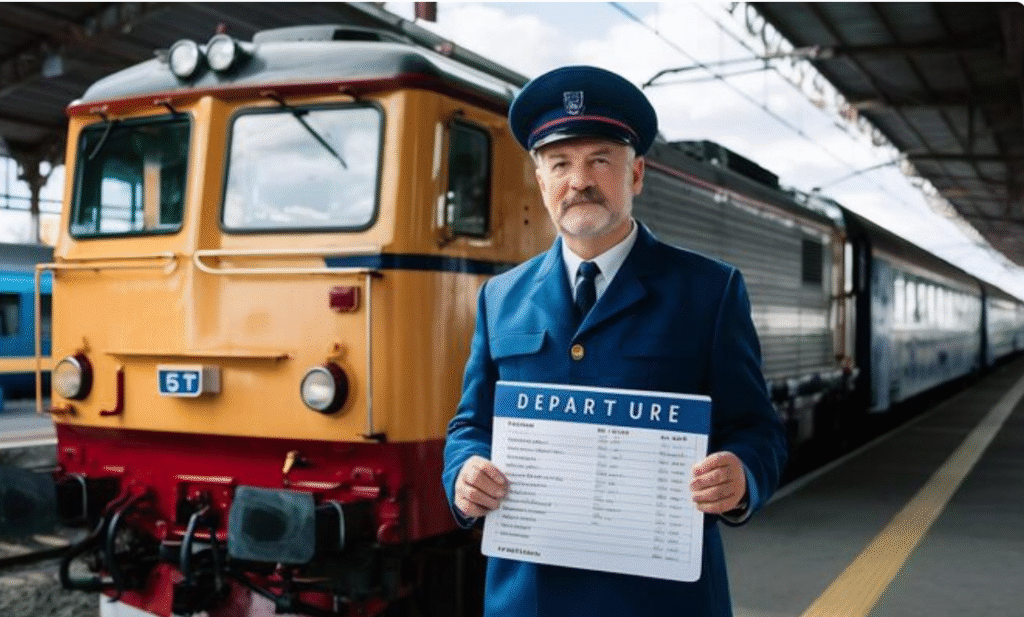The men and women who physically move the country are hidden behind the streamlined steel doors of Singapore’s MRT system. Of these, the role of the SMRT Train Captain is both extremely important and relatively underappreciated. According to Indeed’s estimated data, their typical monthly base wage is around $2,000, which is about 21% less than the national average salary. That number is particularly off-putting for a position that demands constant concentration, snap decisions, and accountability for thousands of daily passengers.

Although the base pay is $2,000 per month, anecdotal accounts indicate that, depending on tenure, experience, and shifts, the average compensation may increase somewhat to about $2,250. Even this higher end, though, is still much below Singapore’s median full-time worker wage, which, according to the Ministry of Manpower’s most recent report, was about $4,500. When compared to growing labor demands in industries like technology, healthcare, and logistics, this disparity becomes even more pronounced.
SMRT Train Captain Job & Salary Overview
| Job Title | SMRT Train Captain |
|---|---|
| Employer | SMRT Trains Ltd |
| Country | Singapore |
| Monthly Base Pay | $2,000 |
| Estimated Total Pay | $2,000–$2,250 |
| National Average | $2,580 (21% higher) |
| Salary Source | Indeed (based on public submissions) |
| Job Type | Full-Time, Public Transportation |
| Reference |
It’s interesting to note that the exactitude and regimented routines of train captains are similar to those of airline pilots or air traffic controllers, occupations that are paid far more. The stakes are remarkably similar even though the work does not require a cockpit or cruising altitude. Particularly during late-night operations, signal failures, or emergency evacuations, passengers entrust their lives to train captains. A single small error in judgment could have disastrous consequences. However, the financial acknowledgment is not commensurate with the importance of that responsibility.
SMRT train captains were among those discreetly keeping the city connected throughout the pandemic, when public transportation networks around the world saw sharp drops in ridership. These people were among Singapore’s unsung heroes, whether they were transporting vital employees or ensuring service continued during circuit breaker times. Their job demonstrated a kind of endurance that was both admirable and required; they worked long shifts, frequently on weekends and holidays.
In contrast, SBS Transit bus captains are said to make between $2,300 and $2,500 per month, which is significantly more than what SMRT estimates for its train captains. Even though this disparity appears minor on paper, it becomes more significant when combined with inflation, housing costs, and everyday living expenses in Singapore’s central city. Budgeting becomes a daily practice in self-control, especially for captains in their early careers.
Comparable employment tend to pay more across international transportation networks. For example, the average yearly salary for London Underground train operators is £55,000, which is more than SGD $6,000 per month. Even while variations in cost of living contribute to the gap, it is still quite large. Shinkansen conductors in Japan typically earn about ¥7 million a year, or roughly SGD $6,300 per month, illustrating how various countries view and incentivize transportation duty.
Efficiency and safety have always been prioritized by the Singaporean government and SMRT. Pay transparency and career advancement for operational personnel, such as train captains, have not been clear, nevertheless. On occasion, union leaders have voiced worries about frontline MRT employees’ job satisfaction and exhaustion. The wage scale hasn’t altered much over the past few years, despite efforts to enhance working conditions, like air-conditioned cabins and better scheduling.
Automation is seen by some as a disruptive force of the future. The future of the train captain position is in jeopardy due to the growing use of driverless trains on more recent MRT lines, such as the Downtown and Thomson-East Coast lines. Older lines still depend on human captains for crisis response and safe navigation, thus this shift is still happening gradually. Ironically, whereas automation may indicate that fewer employees are needed, it also makes their jobs more complex. Even more accuracy and poise are needed when monitoring AI systems, handling nervous passengers during service outages, and stepping in during failures.
Additionally, machines are unable to duplicate the human factor. In one interview, a train captain described how a passenger fainted during rush hour, forcing him to forego the next stop and seek medical attention. His attention to detail made sure the patient got care on schedule. Even though they are not included in compensation ranges or spreadsheets, moments like these capture the true worth of the person behind the console.
Notably, SMRT has implemented several frameworks for professional advancement, giving captains the chance to advance into supervisory, training, or control room responsibilities. However, these transfers frequently call for a number of years of service, thorough evaluations, and sporadic retraining. The transition from captain to operations executive is not always assured for many, and the intermediary positions seldom result in appreciable pay increases.
One could contend that by drawing attention to this pay disparity, more general issues regarding how society views safety-critical roles are raised. Nowadays, fintech interns report pay comparable to junior physicians, and famous influencers can make thousands of dollars for a single sponsored post. In light of this, train captains’ meager monthly pay feels not just out of line but also grossly underpaid.
